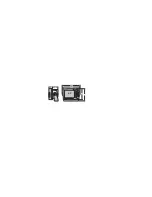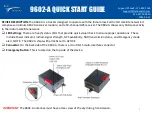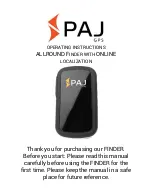
1
Congratulations!
You have purchased one of the finest 12-channel GPS receivers Eagle™
has ever made. With its high contrast LCD screen, easy to use menus,
and outstanding performance, we think you’ll be happy with your Eagle
Expedition™ for many years.
GPS works from satellites that transmit information to the world at very
high frequencies. One disadvantage to this frequency is that it’s “line-of-
sight”. In other words, the signals don’t bounce around like your local
radio or television. If you don’t have a clear view of the sky, or if you’re
inside a building (such as a house), the unit probably won’t be able to
pick up the signals from the satellites. This is common among all GPS
receivers.
Like most GPS receivers, your Eagle Expedition doesn’t have a com-
pass or any other navigation aid built into it. It relies solely on the signals
from the satellites to determine its position. Speed, direction of travel,
and distance are all calculated from position information. Therefore, in
order for it to determine the direction you’re travelling, you must be mov-
ing, and the faster - the better. This is not to say the unit won’t work at
walking speeds - it will. But the faster you travel, the easier it is for the unit
to determine your direction.
Another factor that influences the GPS’ position and navigation capabili-
ties is called selective availability or S/A. This is small errors purposefully
injected into the transmitted signal from the satellites. The government
does this to degrade the system’s accuracy to civilian and foreign users.
Even with S/A, GPS is the most accurate navigation system ever in-
vented on such a large scale. The Government’s accuracy specification
is 100 meters horizontally and 150 meters vertically 95% of the time. In
other words, the position shown on your Eagle Expedition could be up to
100 meters in any direction from your actual position, and the altitude
could be plus or minus 150 meters from what’s shown on the screen,
95% of the time. It’s also important to note that in the other five percent,
your position can be closer than the above, or it can be much further
away.
There are two ways around the S/A problem. One is to have the govern-
ment simply turn it off. In fact, there is growing pressure on them to do
that. The other method is to purchase a DGPS receiver and connect it to
your Eagle Expedition. A DGPS receiver (commonly called a beacon
receiver), picks up correction signals broadcast from ground stations.
The Eagle Expedition takes these corrections and applies them to the
position and altitude screens, giving you much better accuracy.





































